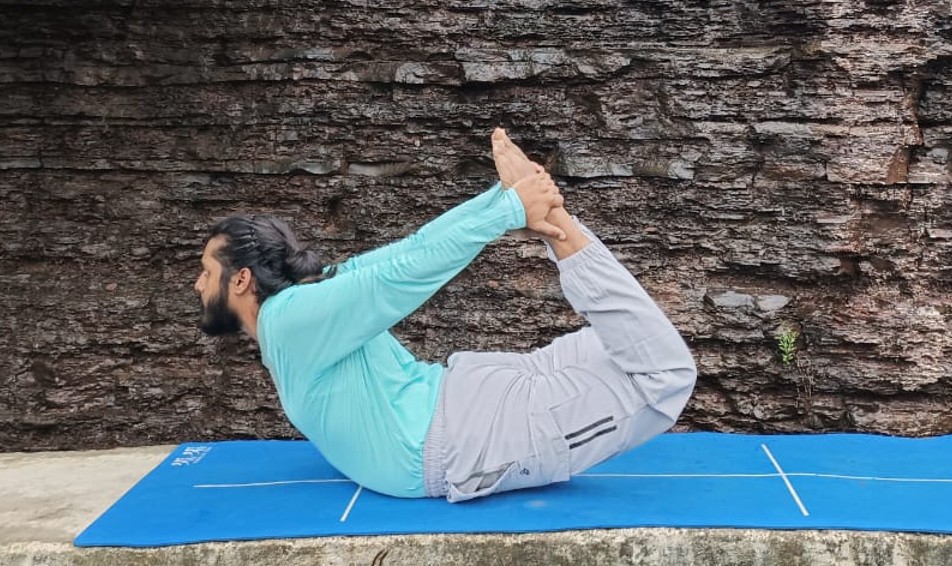Derived from the Sanskrit word “yuj” which means “to unite or integrate”, yoga is an over 5,000-year-old Indian body of knowledge. The central teaching of yoga is maintaining an equanimous state of mind. Being able to do any action with awareness.
By learning the art of dropping the effort through yoga, one experiences the state of being in total alignment with infinity. Yoga can bring about complete balance in one’s personality. It holds out the promise of many solutions that today’s behavioral sciences are looking for. Yoga is the way for human potential to blossom to its fullest, a path to attain the highest goal of uniting with the infinity.
~ Gurudev Sri Sri Ravi Shankar
Here’s everything you need to know about yoga:
The purpose of yoga
Patanjali, the propounder of yoga, enunciates, “The purpose of yoga is to stop misery before it comes.” Whether it is greed, anger, jealousy, hatred, or frustration, all these negative emotions can be healed or re-oriented through yoga.
“Yogah Karmasu Kaushalam”, meaning yoga is a skill in action and expression. Yoga is the skill to live your life, manage your mind, deal with emotions, be with people, be in love, and not let that love turn into hatred. In this world everyone loves, but that love does not stay the same for long. It turns into hatred, sometimes almost immediately. Yoga is that skill, that perspective, that maintains love as love.
Pan IndiaHappiness Program
Anand Utsav
Exclusive ● Live Session with Gurudev Sri Sri Ravi Shankar
Learn Sudarshan Kriya™ Online / In-Person
Starting 13th August 2024
Learn More
Pan India Happiness Program
Anand Utsav
Exclusive ● Live Session with Gurudev Sri Sri Ravi Shankar
Learn Sudarshan Kriya™ Online / In-Person
Starting 13th August 2024
Learn MorePan IndiaHappiness Program
Anand Utsav
Exclusive ● Live Session with Gurudev Sri Sri Ravi Shankar
Learn Sudarshan Kriya™ Online / In-Person
Starting 13th August 2024
Learn MoreA Brief History of Yoga
In the hierarchy of Vedic knowledge, there are four Vedas – Rigveda, Samveda, Yajurveda and Atharvaveda., followed by four Upavedas or sub-Vedas – Ayurveda, Arthaveda, Dhanurveda, and Gandharvaveda. Further down the line are six upangas or components – Shiksha, Kalpa, Vyakarana, Nirukta, Chandas, and Jyotisha. These are further classified into six sub-components – Nyaya, Vaiseshika, Sankhya, Mimansa, Vedanta, and Yoga.
Even during the Indus-Saraswati civilization (dating to 2700 BC), several seals and fossils have been found, with figures performing Yoga. This suggests that yoga was known and practiced even in those early stages of civilization. Read more about the origins of yoga here.
The Four Yogas
The science of Yoga imbibes the complete essence of the Way of Life, including Gyan Yoga or philosophy, Bhakti Yoga or the path of devotional bliss, Karma Yoga or the path of blissful action and Raja Yoga or the path of mind control.

Gyan Yoga
Gyan Yoga is the experiential knowledge of the Self which brings the mind back to purity.

Bhakti Yoga
Bhakti Yoga is the spiritual practice of devoting oneself to a personal form of God.

Karma Yoga
Karma Yoga is the path of ‘action’, of putting in 100 per cent effort without being attached to the outcome. Acting without being attached to the fruits of one’s deeds – this alone can lead to union with the Self, which is the goal of yoga.

Raja Yoga
Raja Yoga is further divided into eight parts. At the heart of the Raja Yoga is balancing and unifying these various approaches in the practice of Yoga Asana.
The benefits of yoga are multifold
- Yoga changes your behaviour; makes you friendly and pleasant to be around
- synonymous with relaxation, happiness, and a creative mind.
- Adds a smile on our faces despite all the stress.
- Improves mental and physical health;
- Gives you intuition, awareness, clarity and peace
Sri Sri School of Yoga
For more than two decades, Sri Sri School of Yoga has trained yoga instructors in the authentic practice of Sri Sri Yoga. Rooted in the original teachings of the ancient yogis, this comprehensive training encompasses a deep and experiential understanding of postures (asanas), breathwork (pranayamas), meditation, yogic wisdom, and teaching techniques—brought to you in a way that is practical, fun, and accessible.
Learn MoreWhy Choose Sri Sri School of Yoga?
Sri Sri Yoga teacher training course teaches about and integrates all paths of yoga including:
- Hatha yoga (effort)
- Raja yoga (effortless, royal)
- Gyana yoga (wisdom)
- Karma yoga (service & action)
- Bhakti yoga (love & devotion) and more.
The primary elements of our training are asanas (postures), pranayamas (breathing techniques), meditation and the experience and application of yoga beyond the yoga mat.
Our Programs

200 Hr
Yoga Teacher Training
Begin your journey and experience the depths of an authentic yoga education.

Sri Sri Yoga Classes
(Level 1)
Improve your flexibility, strength, and health and deepen your self-awareness and centeredness with a holistic approach to yoga.

Sri Sri Yoga Deep Dive
(Level 2)
The Sri Sri Yoga Deep Dive is a specially designed retreat which includes advanced yogic detox processes with a profound impact on the body and the mind.
FAQs on Yoga
Yoga is the best thing to remove these fears from the minds of people.
When communication breaks down, we usually say, “our wavelengths don’t match” because our ability to communicate depends on our ability to receive communication from others. Here, yoga helps us to have a clear mind.















